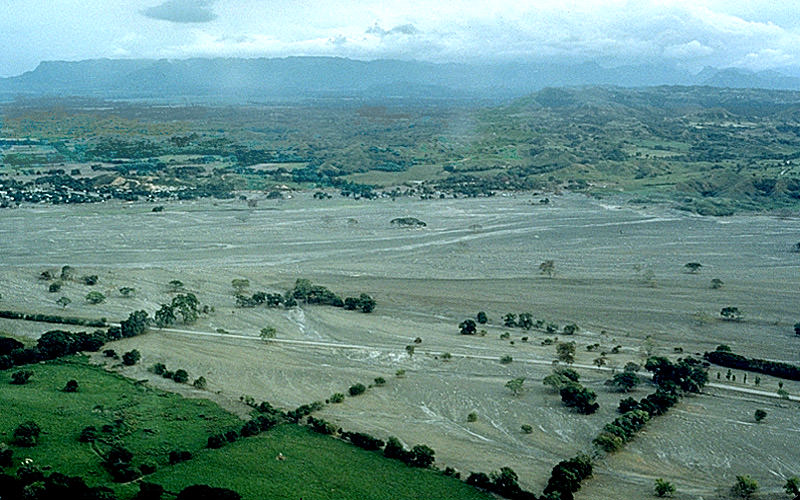[/caption]
Volcanoes have many ways to kill you, from hot lava, rocks blasted through the air, to poisonous gasses. But one of the most dangerous parts of a volcano are mud flows that can stream down their sides, following the path of river valleys. Volcano lahars have been the cause of many deaths in the last few centuries. With more people living close to or even on the flanks of steep volcanoes, even more deaths are certain.
Lahars are volcanic mudflows, and they don’t have to come directly from volcanic activity. They occur when huge amounts of volcanic ash, mixed with water flows down the side of a mountain. They can flow at speeds more than 100 km/hour, following the path of a river valley, but with the weight of concrete. Lahars are liquid when they’re flowing, and then harden almost solid when they stop. One cause of a volcano lahar is an eruption, when volcanic ash mixes with a volcano glacier, creating this muddy mixture. It’s also possible for a lahar to form when a lake or dam breaks, mixing water with ash already on the side of a volcano.
And they’ve caused terrible damage. The eruption of Nevado del Ruiz in Columbia in 1985 sent lahars down the mountainside, burying the city of Armero under 5 meters of mud and debris. A lahar coming off Mount Rainier in Washington sent a wall of mud 140 meters deep, covering a total area of 330 square kilometers – 300,000 people now live in the area covered by that lahar. In the recent eruption of Mount Pinatubo in 1991, 700 people were killed by the lahars that came down the mountain after the intense rainfall that followed the eruption.
The term lahar comes from the Indonesian word for “wave”.
We have written many article about volcanoes in Universe Today. Here’s an article about pyroclastic flows, and here’s an article Plinian eruptions which can cause pyroclastic flows.
Want more resources on the Earth? Here’s a link to NASA’s Human Spaceflight page, and here’s NASA’s Visible Earth.
We have also recorded an episode of Astronomy Cast about Earth, as part of our tour through the Solar System – Episode 51: Earth.

